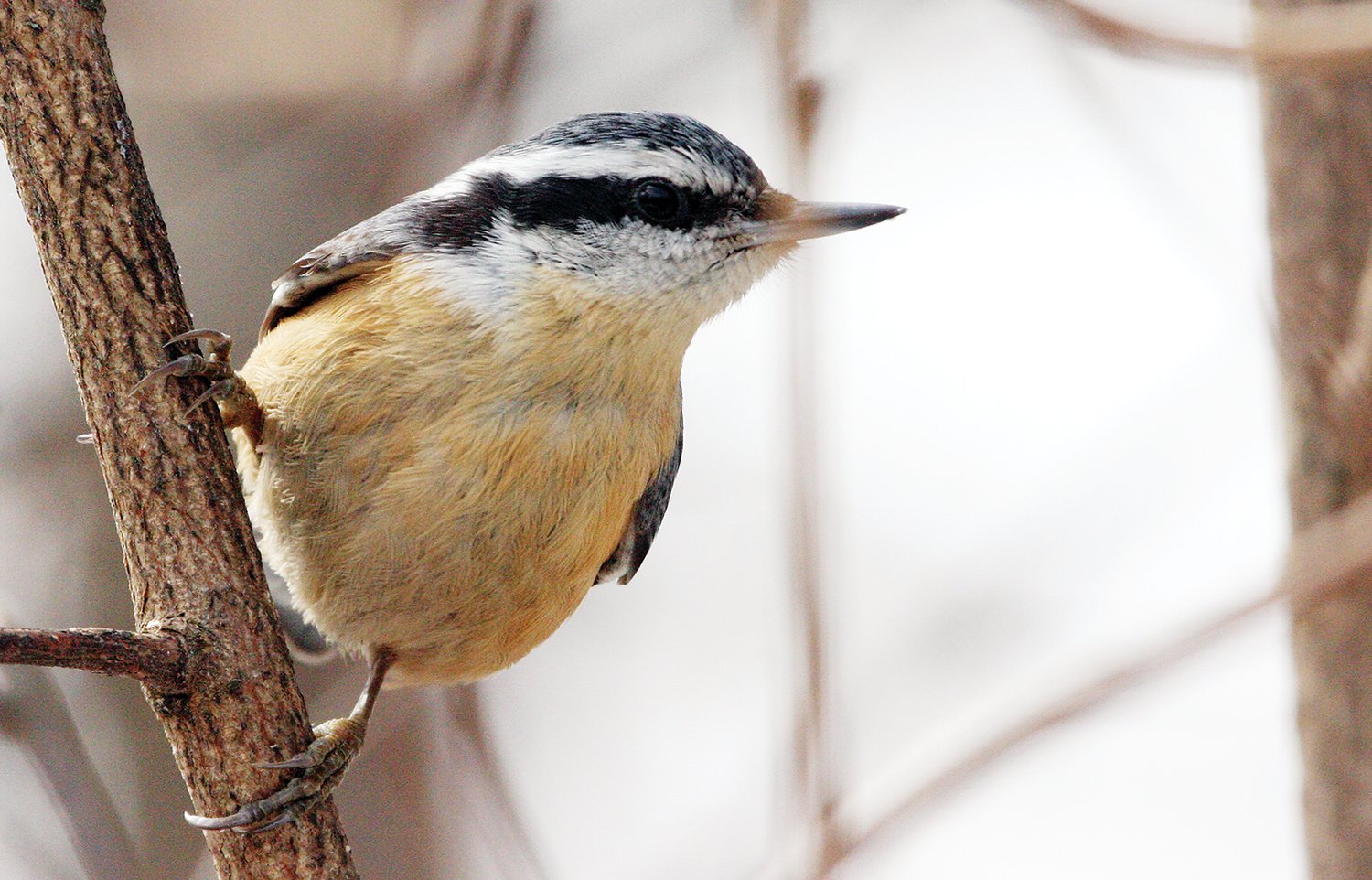Support the Timberjay by making a donation.
It’s the busy season
For red-breasted nuthatches, raising a family is a full-time affair
Our neighborhood red-breasted nuthatches have all but disappeared from our feeders the past few weeks, a sign that they probably have other things on their mind. Few birds in the North Country work …
This item is available in full to subscribers.
Attention subscribers
To continue reading, you will need to either log in to your subscriber account, or purchase a new subscription.
If you are a current print subscriber, you can set up a free website account and connect your subscription to it by clicking here.
If you are a digital subscriber with an active, online-only subscription then you already have an account here. Just reset your password if you've not yet logged in to your account on this new site.
Otherwise, click here to view your options for subscribing.
Please log in to continue |
It’s the busy season
For red-breasted nuthatches, raising a family is a full-time affair
Our neighborhood red-breasted nuthatches have all but disappeared from our feeders the past few weeks, a sign that they probably have other things on their mind. Few birds in the North Country work harder at the business of nesting than the red-breasted nuthatch, which is one of our region’s only non-woodpeckers to excavate its own nesting cavity. Even the significantly larger white-breasted nuthatch doesn’t take on such an onerous task, preferring to utilize old woodpecker-dug cavities instead.
If carving a hole in the side of a tree (they prefer aspen in our region) isn’t daunting enough for a four-inch bird that weighs about a third of an ounce, male red-breasted nuthatches will often partially excavate several potential nest sites, all, apparently, to demonstrate their worth to a potential mate.
Besides digging cavities in trees, the male red-breasted nuthatch performs a variety of displays to attract a mate. His most common display is performed with his back to the female, during which he raises his head, droops his wings and sways from side-to-side. If she’s sufficiently impressed, they form a monogamous bond for the season, rarely venturing beyond vocal range from each other and both take part in the rearing of their young.
Once paired, the female nuthatch does most of the work of finishing the selected cavity. Inside, she then builds a nest from grass, bark strips, and pine needles before lining the inside with fur or feathers if available. She’ll typically lay 5-6 eggs, which hatch about 12 days later. Three weeks after that, the young nuthatches are ready to leave the nest, when, as with most fledged birds, they’ll chase after the parents for a few more weeks, relentlessly begging for food.
Red-breasted nuthatches are pugnacious by nature and even more so in defense of their nest site, often taking on significantly larger birds that venture too near.
Red-breasted nuthatches have another unusual habit that researchers have, so far, not fully explained. They regularly collect and smear sticky spruce and balsam fir pitch around the edges of the opening to their nest cavity. The nuthatches manage to avoid the pitch themselves by flying directly into the opening, folding their wings at the last second. While researchers have suggested a variety of reasons for such behavior, it would seem it most likely provides a barrier to some types of insects or flies that might otherwise pose a risk to the developing young.
Here in the North Country, red-breasted nuthatches are common. They’re a bird of coniferous forests, ranging across forested regions of Canada and in the western mountains of the U.S.
While many of our resident red-breasted nuthatches are permanent residents, most birds that nest in the far northern parts of the species’ range migrate south in winter.
Perhaps because of their tendency to “irrupt” into more southerly parts of in some years, populations of red-breasted nuthatches in our region tend to rise and fall quite dramatically. Some years, participants in area Christmas bird counts will find hundreds of them, while the next year, they’re lucky to spot a couple dozen.
These little birds are regulars at most North Country bird feeders in the winter months. In my experience, they prefer peanuts above everything else, although they’ll also eat sunflower seeds and suet. I have the most luck by combining lard and peanuts. I bring the lard up to room temperature so it’s soft and dump about a cup’s worth in a plastic bag. Then I pour in about two and a half cups of peanuts and smoosh it all together. Then I form it into a shape that fits my peanut feeder. Then I stick it outside for a few hours so it’s cold and hard before taking it out of the plastic bag and inserting it into my peanut feeder. It’s a bit of a hassle, but I’ve found that it will save your expensive peanuts from otherwise disappearing in a matter of hours. My peanut/lard combination will typically last about a week.
I don’t use the peanut feeder or put out suet in the summer, since the bears will carry them away. That leaves sunflower seeds as my only enticement for the nuthatches this time of year. We probably wouldn’t see that much of them anyway. They’ve got a lot going on right now!






